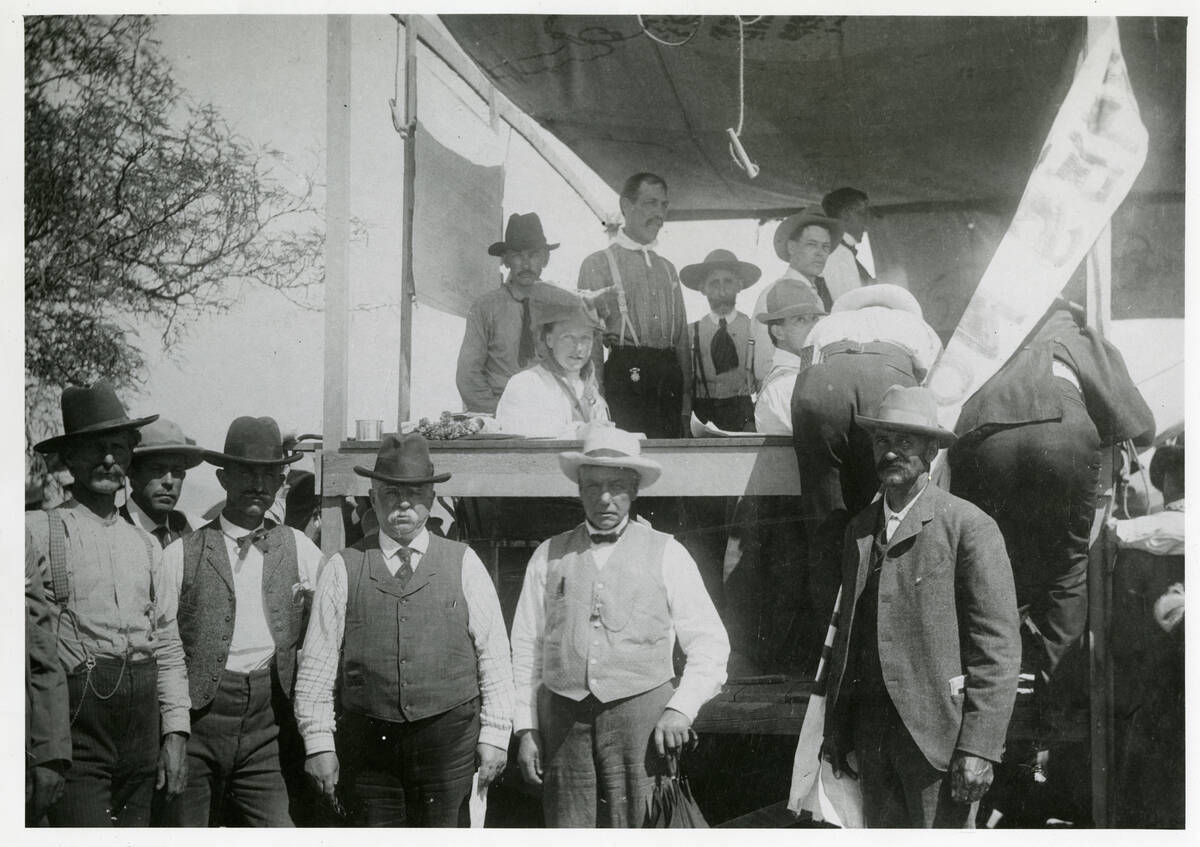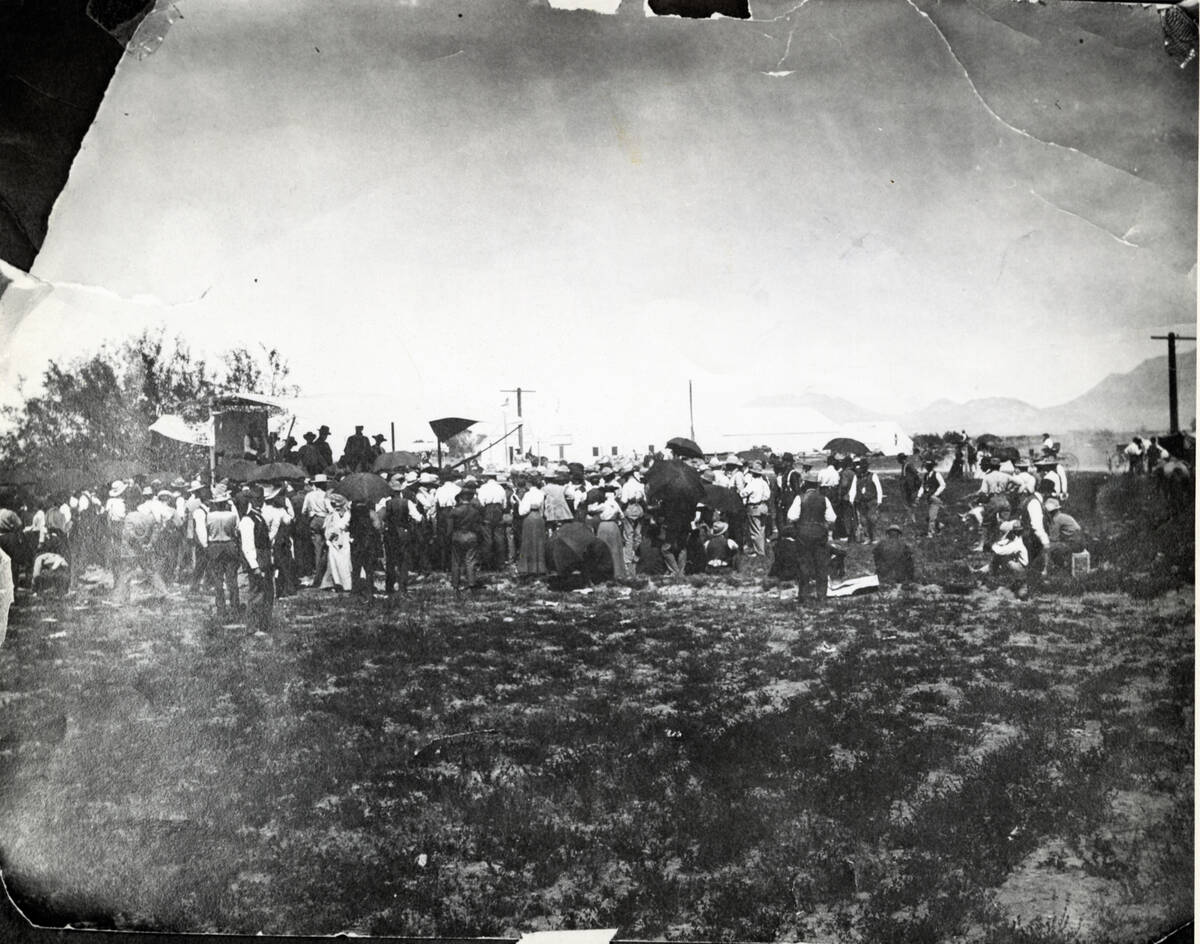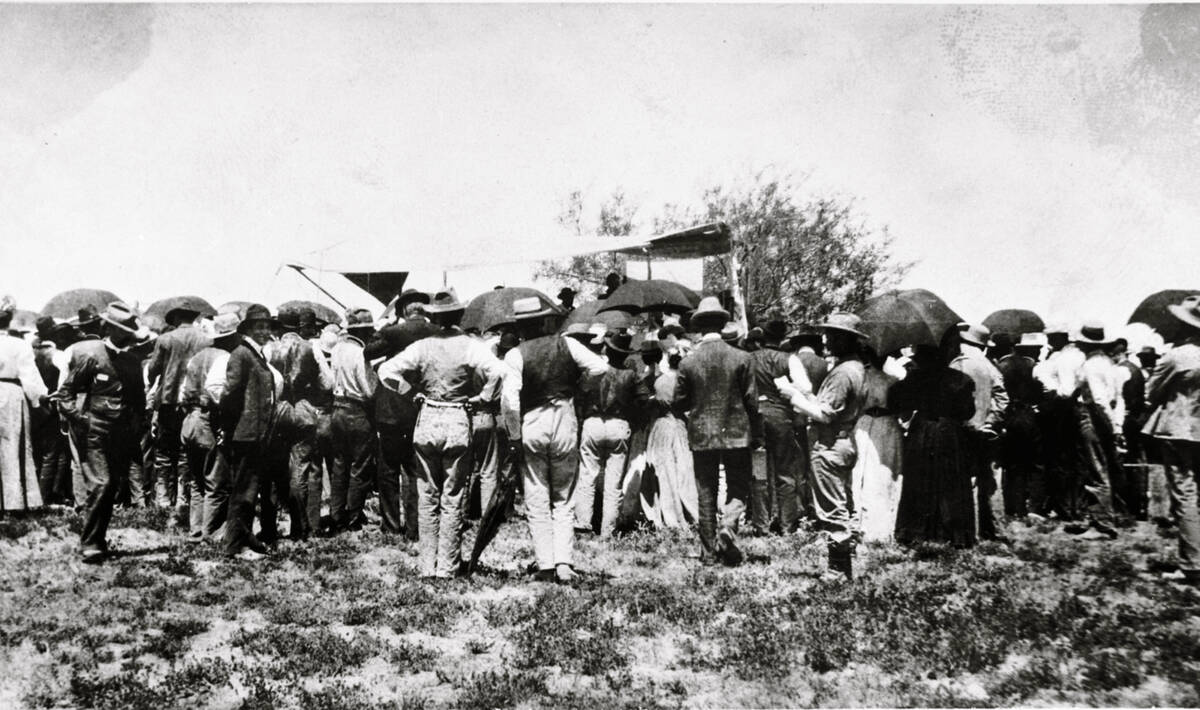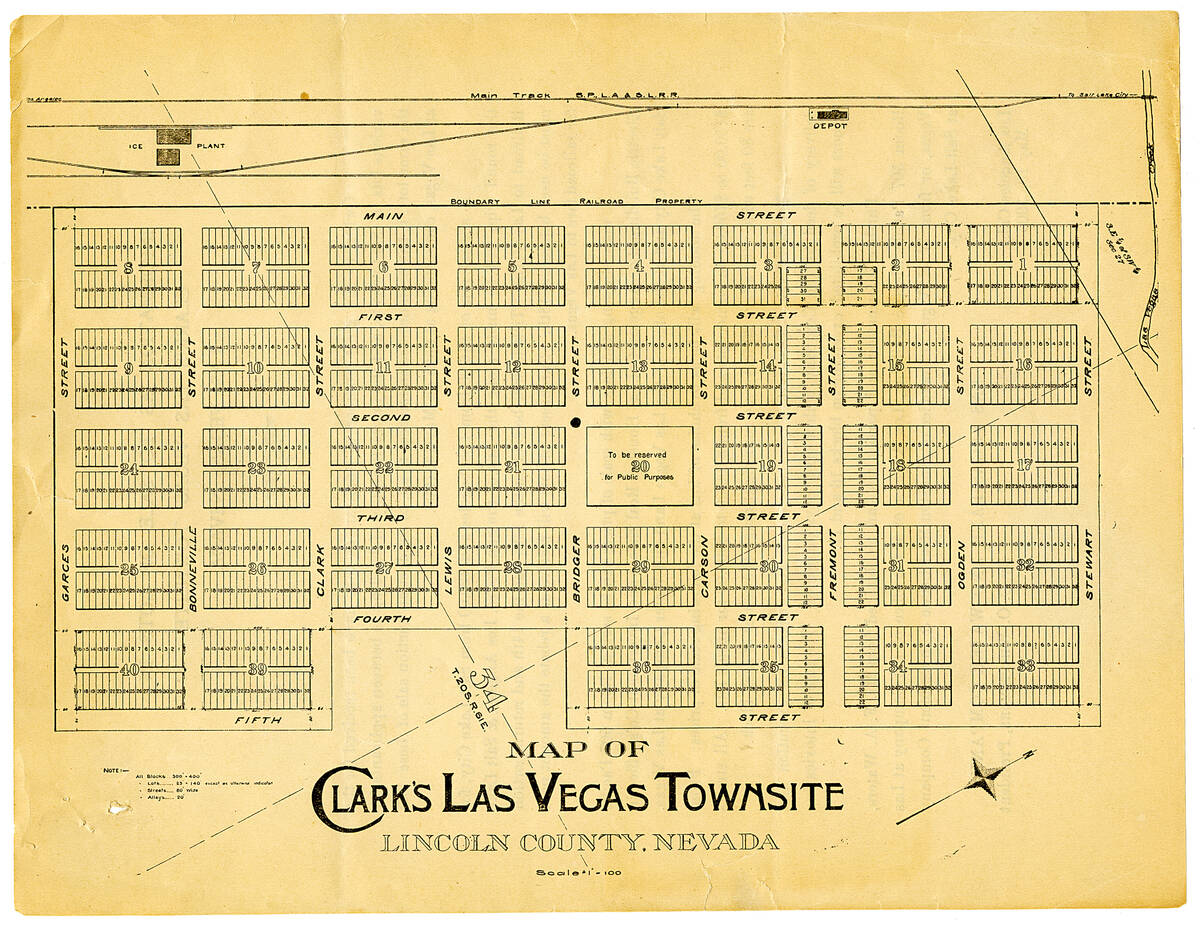Almost 120 years ago, settlers bought modern Las Vegas at a land auction
Modern downtown Las Vegas’ origin can be traced back to 119 years ago Wednesday, when a land auction made history by making the desert settlement into a town.
On May 15, 1905, an auction of land owned by a railroad company founded the Las Vegas town site. A crowd of several thousand, many from Los Angeles and Salt Lake City, Utah, gathered to purchase lots in the 20 blocks sold through the future Union Pacific Railroad.
Montana Sen. William Clark, majority owner of the railroad, bought the land that is now downtown Las Vegas and its water rights three years earlier from Helen Stewart, who owned the Las Vegas Rancho where the Old Las Vegas Mormon Fort State Historic Park now stands. Clark and others in the company wanted to extend the railroad and the small outpost on the Old Spanish Trail, with water and some farming, was a logical train depot site.
For $55,000, Clark bought 1,800 acres of land that he later turned part of into 40 blocks, including a red light district where alcohol could be sold.
Eager buyers participated in the auction
UNLV historian Michael Green said the auction looked like one might expect — hundreds of eager buyers set up in front of a platform where an auctioneer called out each lot and let the bidding run. Bidding started at $150 for corner lots, according to historical records.
“Allegedly, the men were taking their suit jackets off, which is bad news in 1905,” Green said. “One thing to remember when we look at these temperatures was they didn’t have air conditioning.”
The railroad’s town site was in direct competition with another nearby. J.T. McWilliams owned an 80-acre site west of the tracks in what is now the Historic Westside. Saloons, businesses and even weekly newspapers were already established on that site — but crucially, it had no water rights and its buildings were fire hazards.
The land auction was a quick success between the out-of-town surveyors and existing settlers at the McWilliams site. Despite the 110-degree day, Clark sold about 175 lots on the first day for almost $80,000. About half the lots in the Clark town site — bound by Stewart and Garces avenues to the north and south and Main and Fifth streets, now Las Vegas Boulevard — were sold by the end of the auction’s second day for a total of about $265,000.
Lots influenced how downtown was developed
The impact of the land auction is still noticeable today. The city’s downtown map largely follows the same structure and even has most of the same street names. The small lots are even part of the reason we now have the Strip outside of city limits.
“How (the lots) were bought then contributed to how downtown developed and frankly, continues to develop,” Green said. “If you think about the downtown resorts — even as big as Circa is, it has a small footprint. That is one of the reasons the Strip developed, because it’s harder to put together enough land downtown to do the resort that they used to do.”
Las Vegas Mayor Carolyn Goodman said the city still honors the anniversary through the Commission for the Las Vegas Centennial. In 2005, it established a commemorative license plate sold through the Nevada Department of Motor Vehicles. The revenues sold from those plates support grants that preserve the city’s history.
Goodman said settlers and pioneers of early Las Vegas still have many characteristics in common with its residents today.
“We all have a passion to build, a passion to be part of something, a passion for growth, development, excitement and friendship,” Goodman said. “And I think that’s what this community has come to be in so many ways.”
McKenna Ross is a corps member with Report for America, a national service program that places journalists into local newsrooms. Contact her at mross@reviewjournal.com. Follow @mckenna_ross_ on X.

























